Overview
Resting on the confluence of the Mekong and Don rivers,
Pakse is the capital of Champasak Province, but for travellers, its primary purpose is to serve as a gateway to Southern Laos. Lacking the lethargic atmosphere and dilapidated colonial architecture of other Mekong towns, Pakse is a great base for tours to both the Bolaven Plateau and Wat Phu Champasak. Nearby Ban Saphai village and Kho Island are also great for a relaxed look at Southern Lao culture and handicrafts.
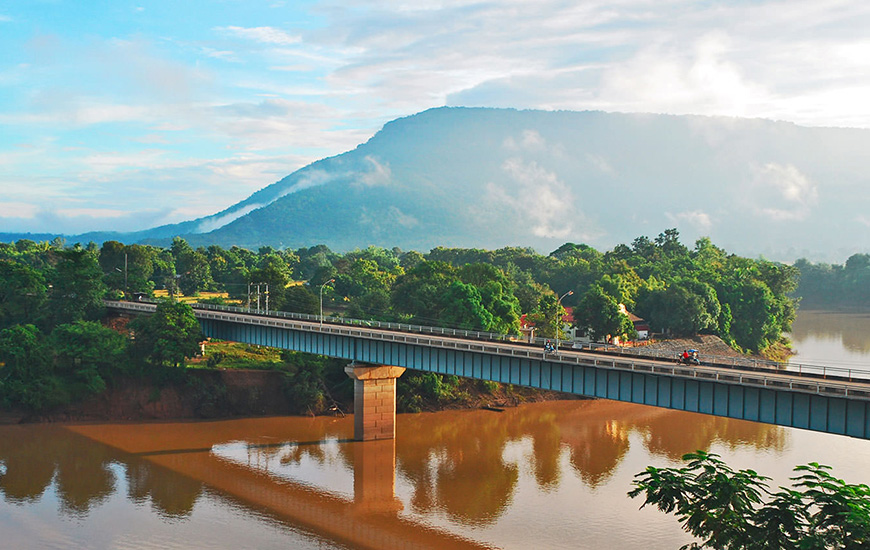 The Lao-Japanese Bridge.
The Lao-Japanese Bridge.
See and Do
While there’s not a great amount of sights in Pakse proper, there are still a few things to see in town. First up is
Wat Phou Salao, located on the opposite side of the Mekong, which houses an enormous Buddha gazing watchfully over the city, and provides the best views in the area, particularly as the sun is setting. Another monastery,
Wat Luang, lies on the riverside and is the largest in Pakse. Gorgeous murals tell tales from the Buddha’s life and various other Buddhist stories.
Switching religions,
Sacred Heart Cathedral may not seem like much from the outside, but within you can find some bizarre and unique paintings of Jesus travelling around Laos, meeting various ethnic groups and tribes.
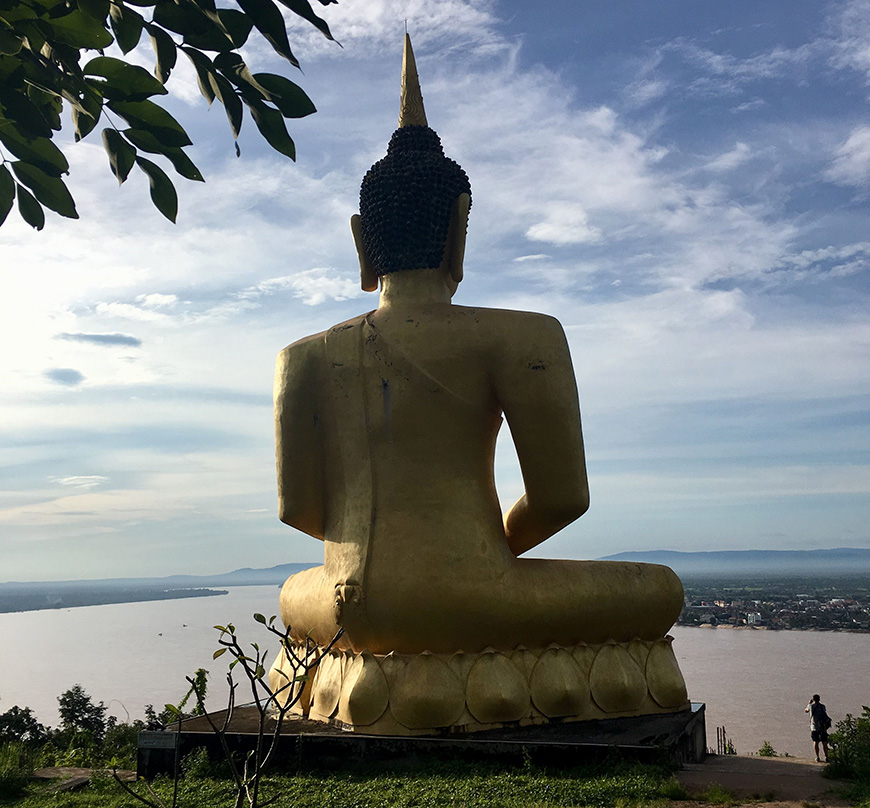
The Buddha watches over Pakse.
Mekong cruises are also very popular here, ranging from budget options to full-on luxury yachts. Moreover, it’s the most common place to book tours to the nearby Bolaven Plateau, Wat Phu Champasak or Kiet Ngong.
Just north of Pakse is sleepy Ban Saphai village hugging the Mekong, as well as nearby Kho island. Primarily known for its weaving industry, visitors in Ban Saphai are encouraged to stop by various private houses to observe the local women plying their craft. A convenient map at the
Ban Saphai Handicraft Centre, where many of the local women have set up their looms, provides you with a route for a small walking tour of the weavers’ houses.
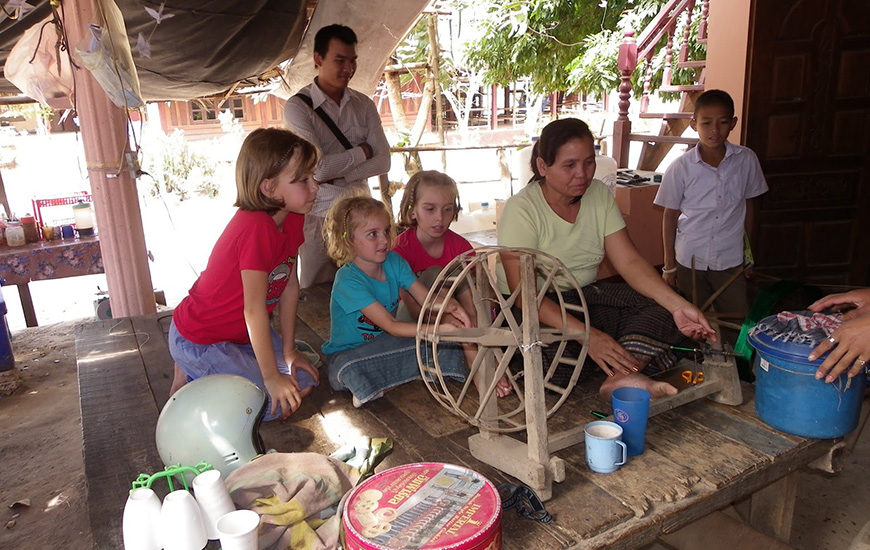
Ban Saphai Handicraft Centre is fun for the whole family.
Just across the water from Ban Saphai is little
Kho island. A mere 450 metres wide, the island feels like it exists in a simpler time, independent from the outside world. There are no cars, and few motorbikes, which makes for a refreshing break compared to almost anywhere else in South East Asia. Like in Ban Saphai, the main attraction is the
weavers, and visitors are again encouraged to stop by the various workshops in people’s homes.
A giant tree claimed to be 500 years old by the islands inhabitants adorns the garden of
Wat Silattana Satsadalam (or Wat Don Kho), which contains a manuscript hall constructed in a fusion of French and Lao styles that makes a quick visit decidedly worth it.
If you’re here for the dry season, you’re in luck, as that means the
beaches will be open and local fishermen can be chartered to take you on an impromptu
fishing trip in the waters of the Mekong.
Both the village and the island are well known destinations, but despite this they’re remarkably devoid of tourists at most times, and constitutes a
good half-day trip from Pakse, or a longer cultural stay at one of the available homestays.
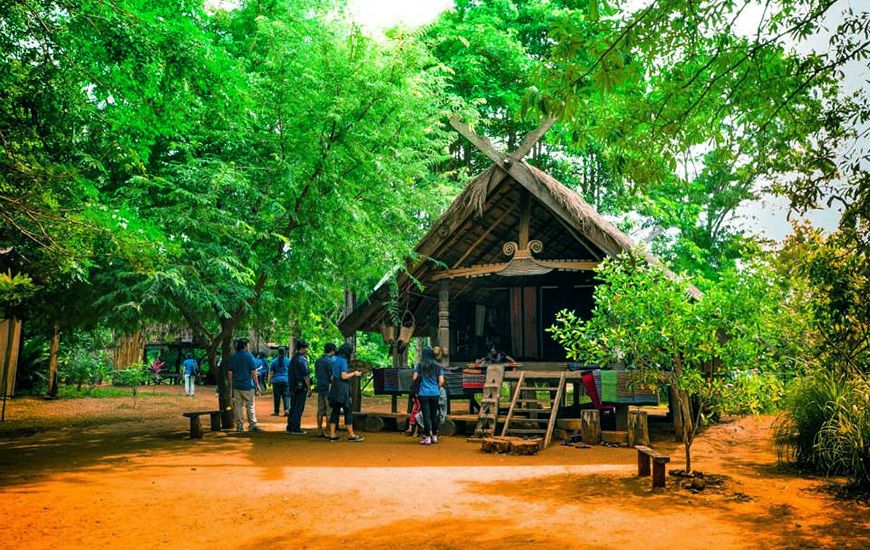
Staying in homestays in Pakse is a great way to get an authentic Lao experience.
Straddling the border between Champasak and Salavan Provinces, the enormous
Phou Xieng Thong National Park Area covers more than 1200 square kilometres. As you trek through the park, you might come to feel as though you’ve left earth and stepped onto an alien planet, with bizarre outcroppings and sandstone ridges (some even containing prehistoric paintings) jutting out of the landscape.
The easiest entry point to the park is located about
50km upriver from Pakse, and the most common way to visit is through a
2 day trek into the park. This tour includes accommodation at a local village homestay inside the park, as well as a boat trip down the Mekong for your return journey. The highlight of the trip comes when you settle down for the sunset on top of
Khong Mountain. However, bear in mind that these tours have to be booked in groups of at least four, so solo travellers might be out of luck.
Culture & Arts
Pakse is home to
Talat Dao Heuang, one of the biggest markets in the entire country. Located near the Lao-Japanese bridge, it’s a great place to soak in the chaotic atmosphere and local culture, especially in the food section.
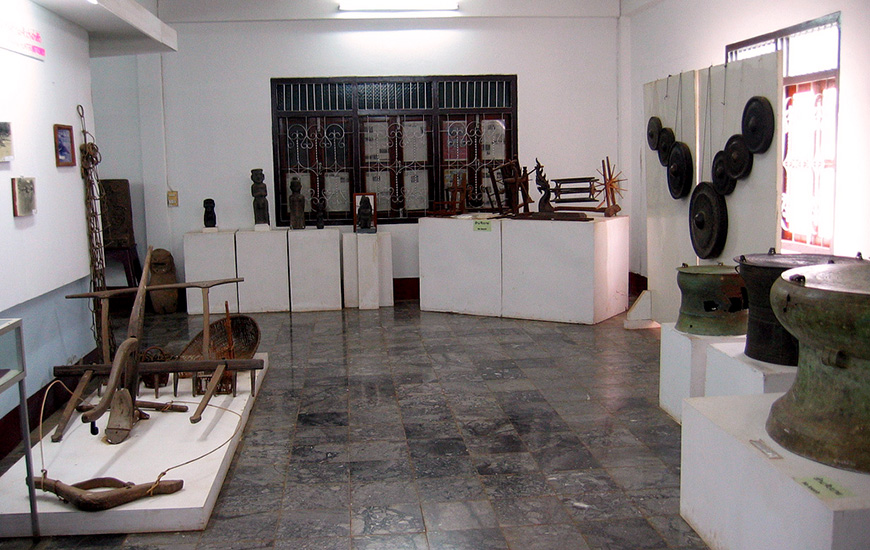
Champasak Historical Heritage Museum houses plenty of cultural and historical artefacts.
Champasak Historical Heritage Museum is definitely worth a visit for those interested in the various ethnic minorities of Laos. Cultural artefacts like Dong Son bronze drums, stone carvings from the Bolaven Plateau, musical instruments and much more is on display here. An especially impressive collection of jewellery from the Nyaheun, Suay and Laven minorities can also be found, featuring large iron ankle bracelets and ivory earrings.
While many travellers only visit
Don Khoh for a half-day or day trip, perhaps the best way to get up close and personal with the local culture is to take your time here and spend the night in a
local homestay. This lets you spend the evening with a local family, including local entertainment and food and really lets you feel like you’re part of the community, if only for a brief time.
Food and Drink
Being a river town, local favourites obviously lean towards what the Mekong can provide and include: Pan miiang baa, a kind of “make-your-own” fish sandwich, as well as
soup created from algae collected from the river.
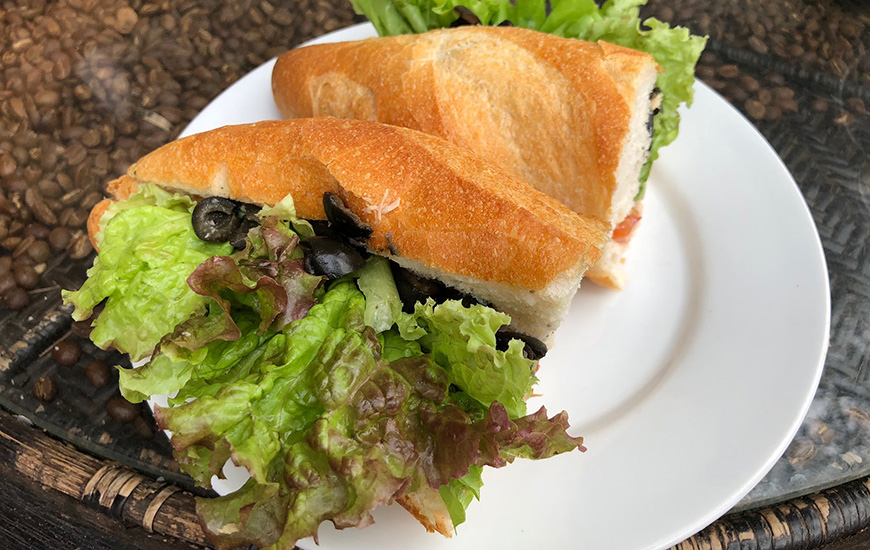
Pan Miiang Baa.
For those less than enthused about seafood, there is also Kow neeo bing, sticky rice patties that are dipped in egg and grilled.
Festivals and Events
While there are no festivals specifically unique to Pakse, it’s a good place to celebrate
Lao New Year. Dominated by water fights in Vientiane and Luang Prabang, the celebrations take a different tack in Pakse. Families organize their own ceremonies featuring large arches made of rice plants, serving as a token of respect to the spirits of the earth and sky. While you might find yourself splashed with fragrant water containing various flowers, this is intended to wash away bad thoughts, and doesn’t come close to the intensity of water fighting in other cities. Indeed, sacred Buddha statues get most of the water, as revellers carry buckets to the city’s 9 temples to wash them. Legend has it that should you wash the Buddha at all 9 temples, you will receive good fortune for the following year.
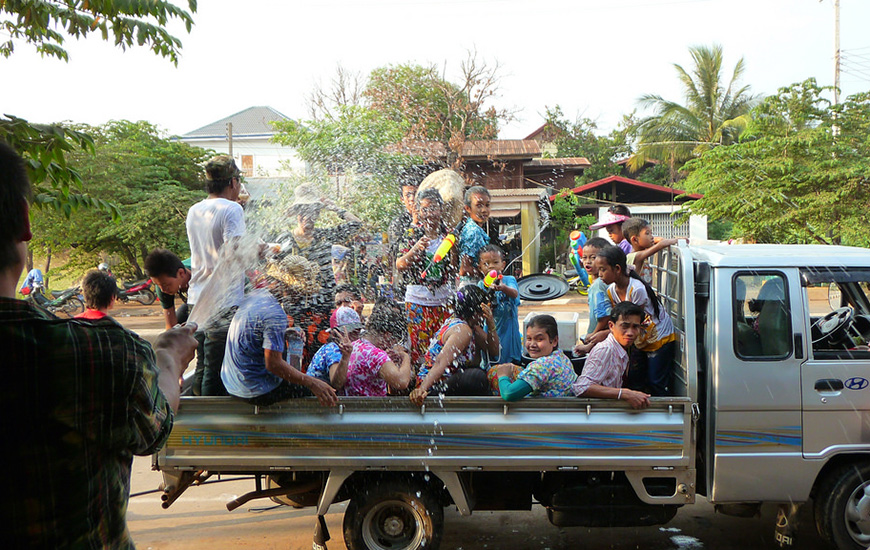
The water fights of Pi Mai are great fun.
As the festival reaches its climax, the most beautiful girl is ed as “Ms. Lao New Year” and paraded through Pakse on the back of a facsimile of a specific animal, the species of which varies year-by-year.